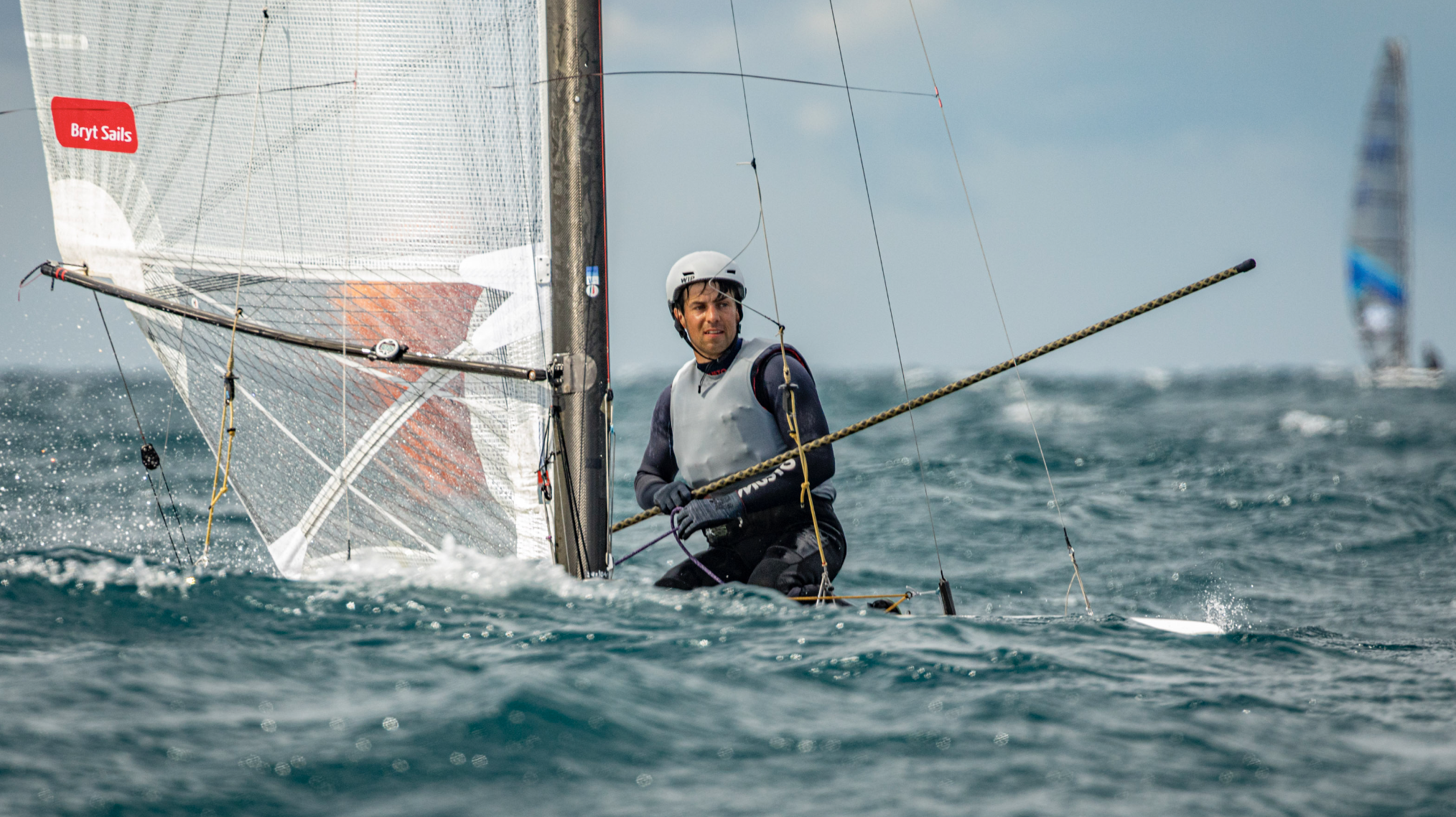The idea of the 'GP style finish' should be trialled at major events and should be seriously looked at now?
Some very interesting good and valid observations made here by Rainer Bohrer. The idea of the 'GP style finish' should be trialled at major events and should be seriously looked at now.
Drinks for the winners! ++ Punta Ala was a true highlight in many respects—not least thanks to the record participation of 170 sailors (86 in the Classic Class and 84 in the Open Class). Here, I want to discuss a few statistical insights, particularly regarding race duration and wait times in the seven races of the – Open - class.
The regatta took place in fairly unpredictable weather, as a storm front from Spain swept across Tuscany during regatta week. This forced us to use the entire wind range for seven out of the planned twelve races. Whenever there was sailable wind, we saw a bit of everything: mixed conditions, with waves ranging from high to long. Besides three races in moderate wind conditions, we also faced four quite challenging races: two light-wind races that just barely allowed for trapezing and foiling, and two intense high-wind races, sometimes at the wind limit—one on the first day, and the other on the last day with a small wind eddy on the horizon. Perhaps this is also why the two new world champions won so decisively. In the Foiling Class, Kuba Surowiec (POL) scored only half as many points after seven races as the impressively skilled runner-up, Darren Bundock (AUS).
But even further down the ranks, the gaps were often significant. In many races, the boats showed large speed differences, leading to numerous overlaps and some DNF entries. On average, more than 30 of the roughly 80 sailors were lapped—sometimes between 40 and 50. And it wasn't only the last places affected; some top-10 and top-20 sailors also got caught in the pack. Naturally, in a fleet this large, getting a good start is crucial to avoid falling into the competition's wind shadow. Surprisingly, though, there were fewer than ten UFD entries.
Despite the generous 30-minute time window for crossing the finish line (that's 66% of the 45-minute target time), an average of 10 sailors per race were marked as DNF, with that number climbing above 20 under more difficult foiling conditions. Incidentally, the first sailor to finish averaged about 40 minutes per race. The last sailors took around 30+ minutes longer to reach the start boat again.
This trend isn’t new. Since about 2018, I think the gaps between sailors in the Open Class have been growing—even though the boats have become quite stable on foils, - but top speeds at the front are increasing. Particularly when the wind window is limited and sailors have traveled from around the world, long wait times and the few races that result are not particularly efficient. The high number of DNF entries is also becoming a growing problem.
There was plenty of discussion about this at the beach bar in Punta Ala. Some suggest introducing qualification rounds to reduce performance differences in the fleet while also strengthening national regattas. Others believe that large open events are simply irreplaceable, especially when it comes to promoting the class.
Regardless, I advocate an "Early Finish" concept in the Open Class only. This could save around 15–20 minutes per race. In Punta Ala, the race duration would has been often determined by the last sailors, who were not yet lapped, rather than by those at the very end of the fleet…The saved time could allow for an additional race per day. For the top sailors, the wait time would be cut roughly in half, and for the sailors further back, an extra race might provide similar overall rounds, potentially adding more scoring opportunities.
However, some argue that such a concept isn't necessary or that the impact would be limited. Those who finish early enjoy the benefit of resting, grabbing a drink, etc., so the wait time is acceptable. Meanwhile, those who wouldn’t complete the full race duration might feel like "second-class" sailors. And it’s true that sometimes, even with Early Finish, conditions simply wouldn’t allow for an „extra“ race—as was the case on the first and last days in Punta Ala. There’s also the question of whether to increase the maximum number of races per day from three to four to take advantage of good conditions for more races.
At least the major clubs are familiar with "Early Finish" concepts, as other foiling classes have practiced them for years. So, there wouldn’t be much resistance if we decide to adopt it. What might this look like in practice? After the first sailor finishes, a flag is raised at the gate, and a sound signal is given—this means no more rounds, and all sailors passing through the gate must go directly to the finish (as the Moth class, for example, does). Alternatively, we could use the gate as a second finish line from that point onward, as suggested by Darren Bundock — this would have the advantage of immediately identifying who has been lapped.
Proposal: let's test the "Early Finish" concept in the Open class at three major events starting in 2026 and then make a decision from there. What do you think? Best, Rainer

